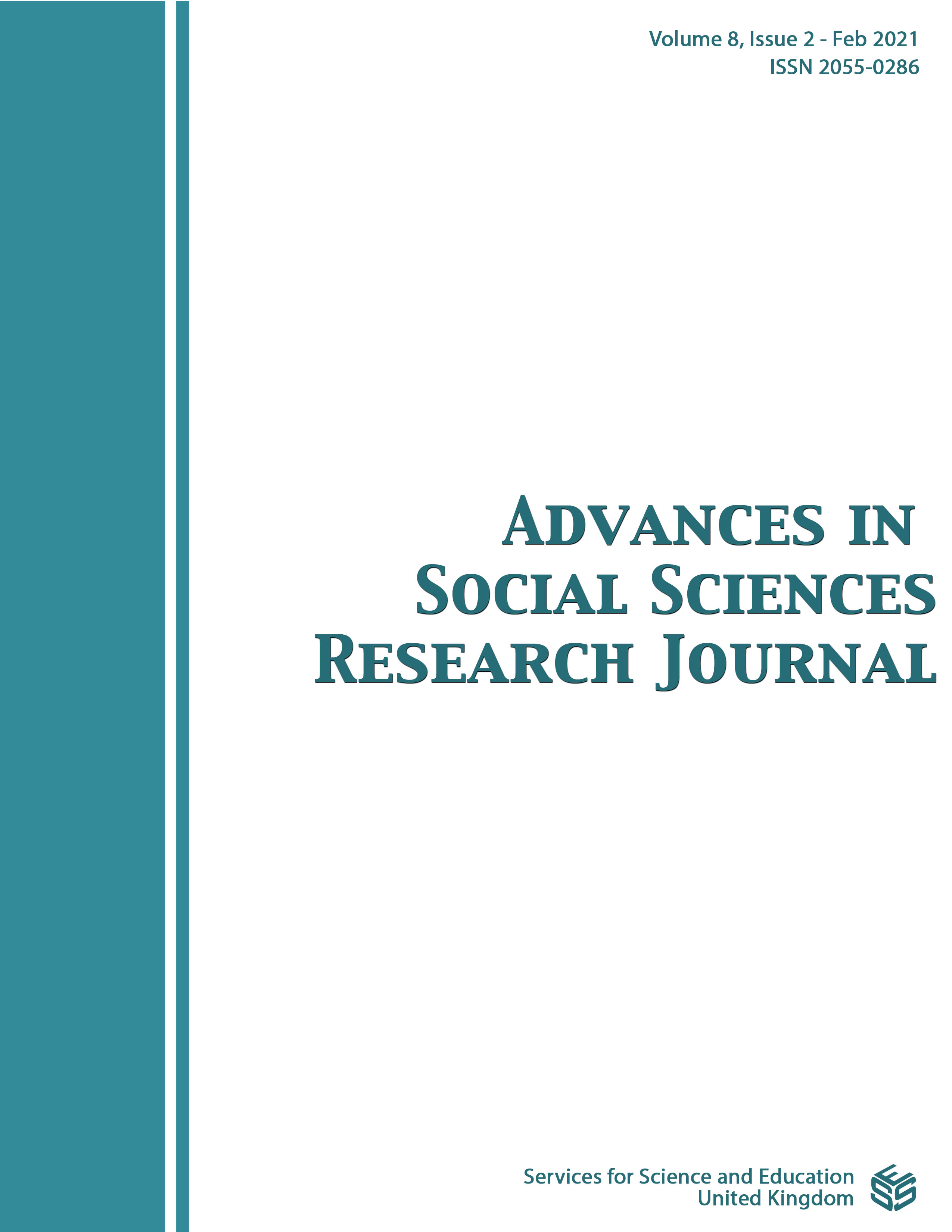Extracting Features of Solving Behavior in Handwriting on Tablets
DOI:
https://doi.org/10.14738/assrj.82.9730Keywords:
Handwriting, Solving Behavior, Tablets, Electronic PenAbstract
This paper proposes a method to estimate the learner's solving behavior during the exercises from the handwriting situation on the tablet. The proposed method extracts the handwriting characteristics in the solving behavior of each learner. It is important to give appropriate guidance according to the understanding of the learner. It is difficult to grasp the understanding status of learners in cases where teachers cannot observe learners directly as in distance learning. Teachers need an online system that estimates the solving behavior of individual learners to notify it of them. In the proposed method, the solving behavior is estimated from logs of both the handwriting and actions seeking supports using the moving window for 30 seconds. The method constructs a random forest model to estimate the solving behavior. Writing characteristics in each solving state are extracted to examine the values of the important variables in a random forest model. Handwriting data were collected from learners in an experiment. The learner's solving behavior was estimated with high accuracy. The constructed model precisely classifies not only states in which the hands stay still from ones in which the hands are moving smoothly but also states of answering correctly from ones of answering incorrectly. Since learners repeating to answer incorrectly are detected on the fly, teachers can take immediate measures for learners who need assistance during exercises.
References
[2]. Kramarski, Bracha; Gutman, Mary. How can self-regulated learning be supported in mathematical E-learning environments?. Journal of Computer Assisted Learning, 2006, 22.1: 24-33.
[3]. SUN, Pei-Chen; CHENG, Hsing Kenny. The design of instructional multimedia in e-Learning: A Media Richness Theory-based approach. Computers & education, 2007, 49.3: 662-676.
[4]. Akahori, Kanji. Do digital devices work better than paper materials for learning. International Journal for Educational Media and Technology, 2014, 8.1: 4-10.
[5]. Konishi, Ryohei, et al., A Study on Inconscient Learning Behaviors and Psychological Evaluations Using Biological Data for an Image-Based Vocabulary Building Application. In: E-Learn: World Conference on E-Learning in Corporate, Government, Healthcare, and Higher Education. Association for the Advancement of Computing in Education (AACE), 2017. p. 798-803.
[6]. Grafsgaard, Joseph, et al., Predicting learning and affect from multimodal data streams in task-oriented tutorial dialogue. In: Educational Data Mining 2014. 2014.
[7]. Oviatt, Sharon. Human-centered design meets cognitive load theory: designing interfaces that help people think. In: Proceedings of the 14th ACM international conference on Multimedia. 2006. p. 871-880.
[8]. Yu, Kun, et al., Cognitive load evaluation of handwriting using stroke-level features. In: Proceedings of the 16th international conference on Intelligent user interfaces. 2011. p. 423-426.
[9]. Yu, Kun, et al., Cognitive load measurement with pen orientation and pressure. Proceedings of MMCogEmS, 2011, 4.
[10]. Chen, Fang, et al. Multimodal behavior and interaction as indicators of cognitive load. ACM Transactions on Interactive Intelligent Systems (TiiS), 2013, 2.4: 1-36.
[11]. Sweller, John. Cognitive load theory. In: Psychology of learning and motivation. Academic Press, 2011. p. 37-76.
[12]. Sweller, John. Element interactivity and intrinsic, extraneous, and germane cognitive load. Educational psychology review, 2010, 22.2: 123-138.
[13]. Paas, Fred; VAN GOG, Tamara. Optimising worked example instruction: Different ways to increase germane cognitive load. 2006.
[14]. Herodotou, Christothea. Young children and tablets: A systematic review of effects on learning and development. Journal of Computer Assisted Learning, 2018, 34.1: 1-9.
[15]. Read, Janet C. A study of the usability of handwriting recognition for text entry by children. Interacting with Computers, 2007, 19.1: 57-69.
[16]. Mann, Anne-Marie, et al., Children's Creativity Lab: Creating a'Pen of the Future'. In: Proceedings of the 2014 Workshops on Advances in Computer Entertainment Conference. 2014. p. 1-9.
[17]. Anthony, Lisa; Yang, Jie; Koedinger, Kenneth R. A paradigm for handwriting-based intelligent tutors. International Journal of Human-Computer Studies, 2012, 70.11: 866-887.
[18]. Asai, Hiroki; Yamana, Hayato. Detecting student frustration based on handwriting behavior. In: Proceedings of the adjunct publication of the 26th annual ACM symposium on User interface software and technology. 2013. p. 77-78.
[19]. Asai, Hiroki; Yamana, Hayato. Detecting Learner's To-Be-Forgotten Items using Online Handwritten Data. In: Proceedings of the 15th New Zealand Conference on Human-Computer Interaction. 2015. p. 17-20.
[20]. Maruichi, Takanori; Ishimaru, Shoya; Kise, Koichi. Self-confidence estimation on vocabulary tests with stroke-level handwriting logs. In: 2019 International Conference on Document Analysis and Recognition Workshops (ICDARW). IEEE, 2019. p. 18-22.
[21]. Maruichi, Takanori, et al. Handwriting behavior as a self-confidence discriminator. In: Adjunct Proceedings of the 2020 ACM International Joint Conference on Pervasive and Ubiquitous Computing and Proceedings of the 2020 ACM International Symposium on Wearable Computers. 2020. p. 78-81.
[22]. Kleitman, Sabina; Stankov, Lazar. Self-confidence and metacognitive processes. Learning and individual differences, 2007, 17.2: 161-173.
[23]. Stankov, Lazar, et al. Confidence: A better predictor of academic achievement than self-efficacy, self-concept and anxiety?. Learning and Individual Differences, 2012, 22.6: 747-758.
[24]. Smoker, Timothy J.; Murphy, Carrie E.; Rockwell, Alison K. Comparing memory for handwriting versus typing. In: Proceedings of the Human Factors and Ergonomics Society Annual Meeting. Sage CA: Los Angeles, CA: SAGE Publications, 2009. p. 1744-1747.
[25]. Longcamp, Marieke, et al., The influence of writing practice on letter recognition in preschool children: A comparison between handwriting and typing. Acta psychologica, 2005, 119.1: 67-79.
[26]. Holmberg, Borje. Theory and practice of distance education. Routledge, 2005.
[27]. Herodotou, Christothea, et al. Empowering online teachers through predictive learning analytics. British Journal of Educational Technology, 2019, 50.6: 3064-3079.
Downloads
Published
How to Cite
Issue
Section
License
Authors wishing to include figures, tables, or text passages that have already been published elsewhere are required to obtain permission from the copyright owner(s) for both the print and online format and to include evidence that such permission has been granted when submitting their papers. Any material received without such evidence will be assumed to originate from the authors.






